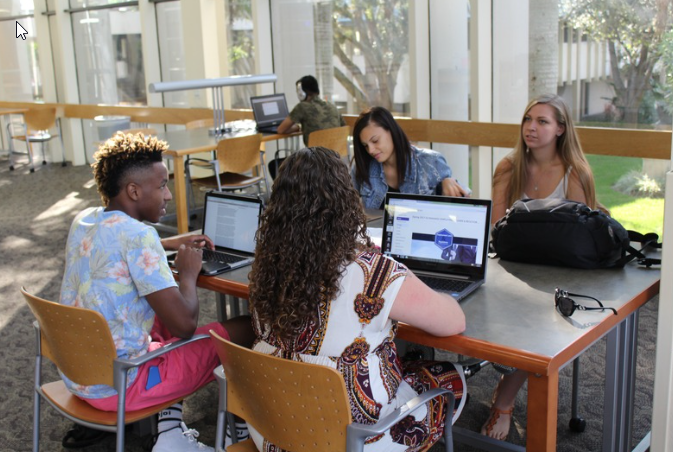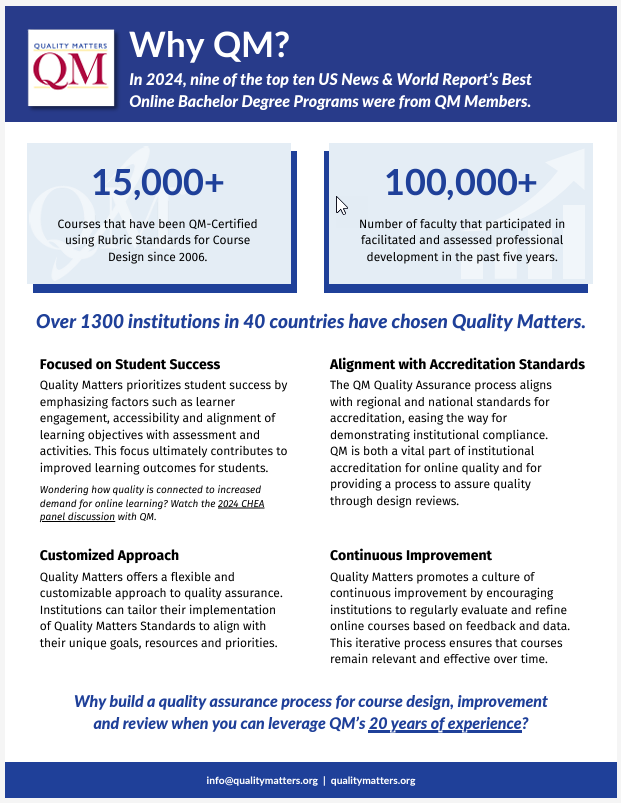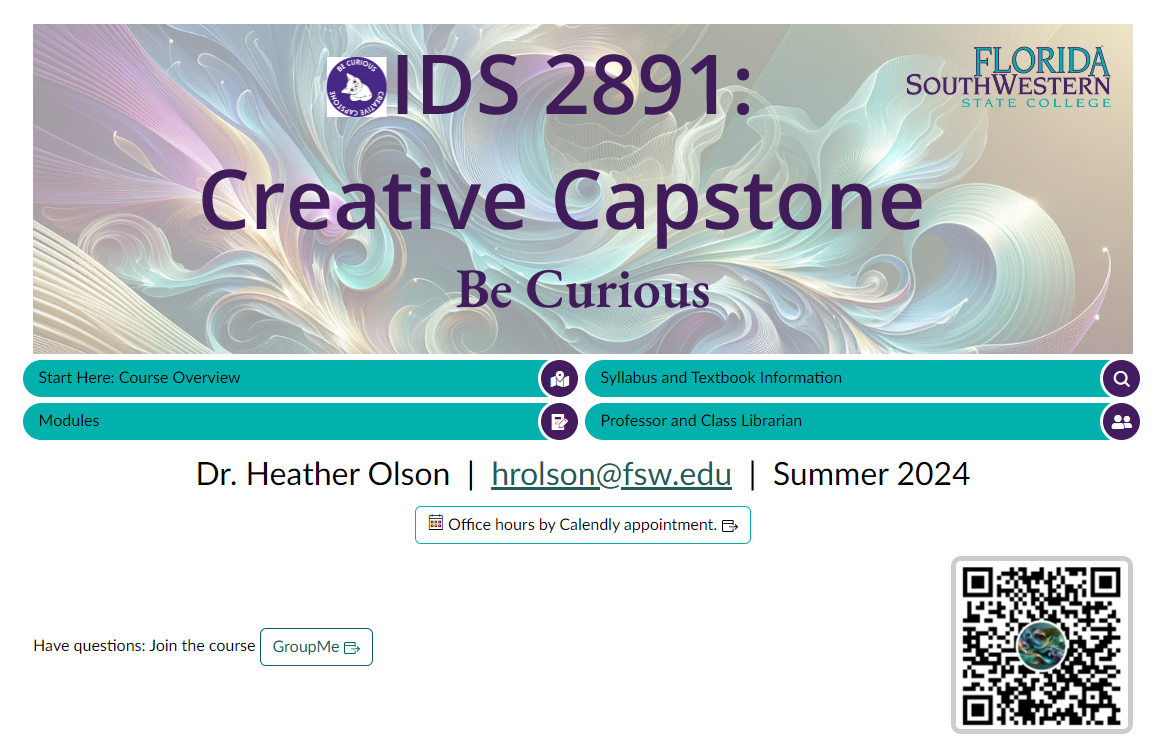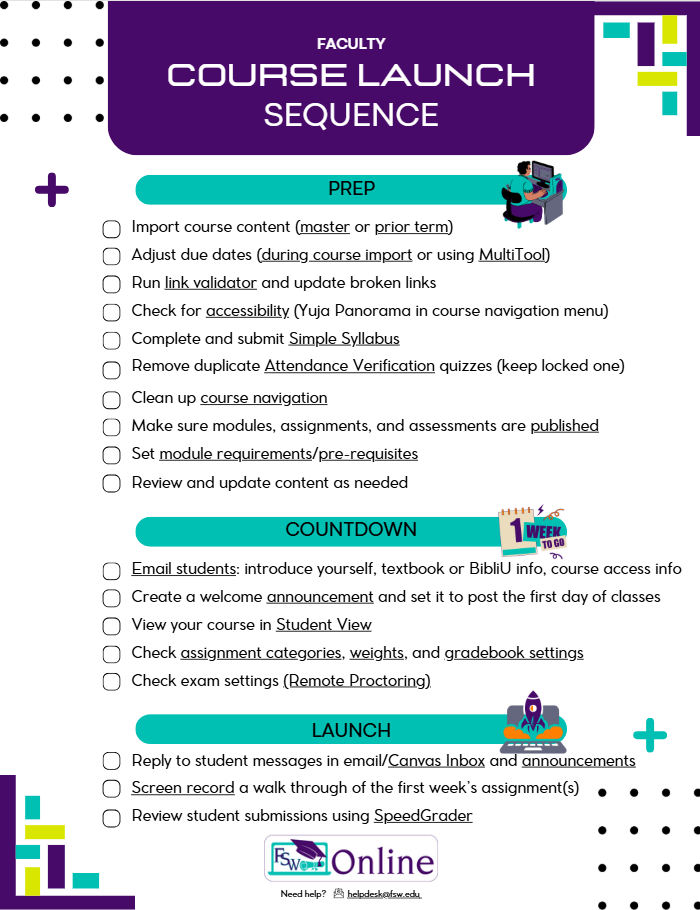The Technology Enhanced Classroom
5 Setting Up Your Canvas Course
 Efficiently setting up your online courses provides a smooth start to the semester. Florida SouthWestern State College offers extensive resources to help faculty with course set-up. This section explores these tools, ensuring FSW Canvas courses are well-organized and ready to deliver an engaging learning experience from day one.
Efficiently setting up your online courses provides a smooth start to the semester. Florida SouthWestern State College offers extensive resources to help faculty with course set-up. This section explores these tools, ensuring FSW Canvas courses are well-organized and ready to deliver an engaging learning experience from day one.
How Can I Import Existing Course Materials Quickly?
Utilizing FSW Departmental Courses
 If you’re teaching a new course, you might wonder where to start with gathering materials. FSW offers a solution through its library of departmental courses designed by experienced faculty in collaboration with Learning Technologies.
If you’re teaching a new course, you might wonder where to start with gathering materials. FSW offers a solution through its library of departmental courses designed by experienced faculty in collaboration with Learning Technologies.
- Comprehensive Resources: These departmental courses are pre-loaded with essential elements, including course materials, assignments, and accessible resources.
- Quality and Compliance: Each course is rigorously reviewed to ensure alignment with course objectives and accessibility standards.
Import Process:
- Request an Import: Access these resources by submitting a Course Import Service Request via the Office of Information Technology website. You will need to sign into your FSW account to complete this request.
For Previous Course Iterations:
- Self-Service Content Copy: If you wish to use materials from a previously taught course, Canvas allows you to copy content into a new semester’s course shell easily. Utilize this Canvas guide for step-by-step instructions.
What Are the Best Ways to Set Up My Course Homepage?
Creating an Inviting Entry Point
The course homepage is the first impression students have of your course. It’s essential to make it informative and welcoming.
- Customization Options: You can set the homepage to display your course modules, a list of assignments, or a custom page that you create.
- Recommendation: A well-designed, specific page that includes the course name, your contact information, and navigation tips is highly recommended to guide students effectively.

Setting Your Homepage:
- To designate a specific page as your homepage, use these guides:
FSW Faculty Take
I believe (and it works for me), that connecting with each student during the first week of class on a personal level is key. Online students need to know that I am present. Outreach is key; sticking to my “rules” and not making exceptions is also key. Not overwhelming students with information, rules, and consequences is also important in the first few days of an online course.
How Can I Organize Course Content for Better Learning?
Structuring with Modules
Modules in Canvas help organize and present the course content in a digestible and pedagogically effective manner.
- Purpose of Modules: They allow you to structure content by weeks, units, or themes, facilitating a manageable and logical flow of information.
- Content Flexibility: Modules can house various types of content, including lectures, readings, discussions, and assessments.
Learn More:
-
- Enhance your skills in creating and organizing modules by watching this Modules Overview video.
Best Practices for Course Setup
 To ensure your course setup is effective, consider these best practices:
To ensure your course setup is effective, consider these best practices:
- Early Preparation: Begin setting up your course well before the semester starts to allow ample time for adjustments and approvals.
- Student-Centric Design: Always consider the student experience when choosing how to organize and present course content. Ensure navigation is intuitive and materials are accessible.
- Consistent Updates: Regularly update the course materials and structure based on student feedback and your own observations to continuously improve the course quality.
- Checklist: Download the Faculty Course Launch Sequence Checklist from the FSW Knowledge Base
By following these guidelines and utilizing the provided tools and resources, you can create a dynamic online learning environment that is well-prepared to meet the needs of your students right from the start of the semester.
Deep Dive
Does your course make a good first impression? (33 min)
Media Attributions
- Engagement in Online Learning
- QM © Quality Matters
- Course home page
- Faculty Course Launch Sequence
